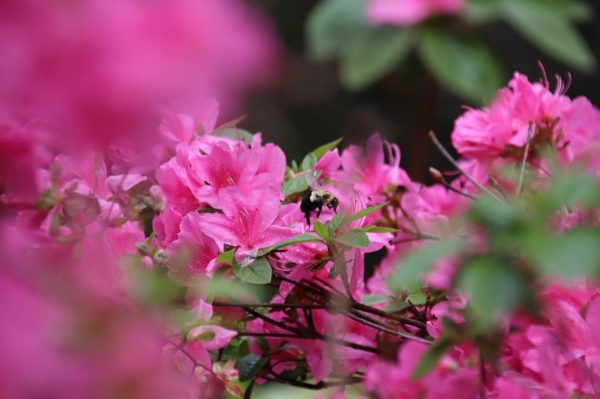BRATTLEBORO — When I recently heard more dire news about massive insect, bee, and bird decline, I decided to get with the program and - even though I'm a complete gardening novice - create a pollinator garden.
At first, I put off doing so because a), I didn't really know what I was doing, b) it seemed as though it would be too much work, and c) digging up a patch of overgrown weeds and cutting out grass sod isn't my idea of fun.
Then one day I overheard a woman say to her friend, “You know, I was digging sod the other day, and it wasn't so bad! All I did was get a shovel, cut small patches vertically, and then shove the shovel horizontally under the grass like I was scraping icing off a cake.”
“I shook out the sod clumps, dumped them in a pile to compost, and - voilà!” she said. “Done in no time!”
That was the tap on the shoulder to get me off my duff and get going with the garden. I'll never be perfect at it and from the birds', bees', and insects' point of view, there isn't time to stall anymore.
To my amazement, by the end of a three-day weekend I had a 20-foot-by-4-foot pollinator garden at the back of my house, complete with welcoming “Pollinator Friendly Garden” signage and brick edging.
* * *
Initially, I searched online for which native pollinator plants work well in my ZIP code. Next step was finding nurseries (like the Native Plant Trust's Nasami Farm in Whately, Mass.) that sell native plants grown without herbicides and pesticides.
Once I got going digging up the dead stuff and carving out sod, I couldn't stop. I added some compost to the fresh dirt, dug holes for the plants, tucked them into the soil, watered them, covered them with a bit of mulch, and lined the space with bricks.
Three months later, that former dead zone is a rainbow of color and absolutely teeming with life.
Within the last hour, as I sat on the grass next to the garden, sparkling emerald-green hummingbirds zoomed in as close as 12 inches from my head (I kid you not), sipping nectar from crimson red salvia and bee balm. Mesmerizing, multicolored grasshoppers ricocheted between grasses and leaves. Gorgeous monarch and swallowtail butterflies flitted about the Mexican sunflower and purple verbena.
It was deeply gratifying to see an amazing variety of bees, happily humming and buzzing and gathering nectar from mint flowers, anise hyssop, and purple coneflower. White, yellow, and orange-speckled moths whirled about one another in a joyful arial dance before plummeting onto various blossoms.
The greatest surprise and joy occurred when I noticed a parting of leaves to my left, and a luminous katydid emerged to perch on a bee balm seed head.
A katydid!
How did it traverse time and space and arrive from my childhood in all its glowing green glory? And who told it about the garden?
* * *
Forgive me for stating the obvious, but if I hadn't transformed grass and dead vegetation into a native flower garden, I would be experiencing an empty silence in the yard, and these living beings would be traveling farther for food - or perhaps not existing at all.
We're at a tipping point. A green lawn's not really so precious, but life on Earth is.
Building a neighborhood patchwork quilt of native pollinator gardens creates vital havens and food sources for our friends of the natural world.
Get out the shovel, start small, and let's tip the scales toward restoring the wonder, delight, and rightful home of the innocent ones: the birds, bees, insects, and butterflies that were here long before us and that need us, now more than ever, to work on their behalf.
Believe me, it's true.
If you build it, they will come - back. In glorious shapes and forms you never imagined.
And when they come back, when that hummingbird soars in on a scorching hot day and and takes nourishment from that flower you planted; when the goldfinch, too, now has seed with which to survive a harsh winter; when the crickets, grasshoppers, and shimmering dragonflies now have a place to perch and sing, a kind of healing happens.
It's a healing borne of gratitude and heartfelt reparation.
